How many bits are used to represent the sign bit in the IEEE
How many bits are used to represent the sign bit in the IEEE 754 floating point standard for 32 bits (single precision)?
Answer:
Question 2
Not yet answered
Points out of 1.00
Flag question
Question text
How many bits are used to represent the exponent in the IEEE 754 floating point standard for 32 bits (single precision)?
Answer:
Question 3
Not yet answered
Points out of 1.00
Flag question
Question text
How many bits are used to represent the significand (fraction) in the IEEE 754 floating point standard for 32 bits (single precision)?
Answer:
Question 4
Not yet answered
Points out of 1.00
Flag question
Question text
What is the value of the bias used by the IEEE 754 standard for 32 bits (single precision)?
Answer:
Question 5
Not yet answered
Points out of 1.00
Flag question
Question text
What is the decimal value equal to the following IEEE floating point data (expressed in hex)?
C1B10000
Although you might be tempted to figure this out using a calculator, you\'ll need to be able to do it by hand on a quiz or a test so it is a good idea that you do that here.
Select one:
a. 22.125
b. 10.5
c. -10.125
d. 22.375
e. -22.125
Question 6
Not yet answered
Points out of 1.00
Flag question
Question text
What is the decimal value equal to the following IEEE floating point data (expressed in hex)?
41FA0000
Select one:
a. 31.25
b. -31.375
c. -30.125
d. 22.125
e. 10.5
Question 7
Not yet answered
Points out of 1.00
Flag question
Question text
Using IEEE standard for 32-bit floating point, give the hex representation for 5.625. (You\'ll convert into binary using the technique in your book and then convert the binary to hex -- 8 hex digits, no spaces.)
Answer:
Question 8
Not yet answered
Points out of 1.00
Flag question
Question text
A floating point overflow is represented in the IEEE 754 standard by
Select one:
a. a normalized number
b. a denormalized number
c. positive or negative infinity
d. not a number
e. zero
Question 9
Not yet answered
Points out of 1.00
Flag question
Question text
Infinity minus infinity is represented in the IEEE 754 standard by
Select one:
a. a normalized number
b. not a number
c. a denormalized number
d. zero
e. positive or negative infinity
Question 10
Not yet answered
Points out of 1.00
Flag question
Question text
Interpret the following hex as an IEEE 754 32-bit floating point value. What is this number?
007f ffff
Select one:
a. a normalized number
b. not a number
c. zero
d. the largest positive denormalized number
e. positive infinity
Question 11
Not yet answered
Points out of 1.00
Flag question
Question text
Interpret the following hex as an IEEE 754 32-bit floating point value. What is this number?
0000 0001
Select one:
a. not a number
b. the smallest positive denormalized number
c. positive infinity
d. zero
e. a normalized number
Question 12
Not yet answered
Points out of 1.00
Flag question
Question text
Interpret the following hex as an IEEE 754 32-bit floating point value. What is this number?
8000 0000
Select one:
a. the smallest positive denormalized number
b. not a number
c. zero
d. a normalized number
e. positive infinity
Question 13
Not yet answered
Points out of 1.00
Flag question
Question text
Interpret the following hex as an IEEE 754 32-bit floating point value. What is this number?
FF80 0000
Select one:
a. a normalized number
b. zero
c. not a number
d. negative infinity
e. the smallest positive denormalized number
Question 14
Not yet answered
Points out of 1.00
Flag question
Question text
Interpret the following hex as an IEEE 754 32-bit floating point value. What is this number?
FFB0 0000
Select one:
a. negative infinity
b. zero
c. the smallest positive denormalized number
d. negative not a number
e. a normalized number
Question 15
Not yet answered
Points out of 1.00
Flag question
Question text
Order the following in terms of smallest to largest magnitude (the largest numbers that can be represented):
short int (16 bits)
int (32 bits)
float (32 bit IEEE)
double (64 bit IEEE)
Select one:
a. float, short int, int, double
b. short int, float, int, double
c. short int, float, double, int
d. short int, int, float, double
e. float, double, short int, int
Solution
1. How many bits are used to represent the sign bit in the IEEE 754 floating point standard for 32 bits (single precision)?
Answer: 1(One) bit is used to represent the sign bit.
2. How many bits are used to represent the exponent in the IEEE 754 floating point standard for 32 bits (single precision)?
Answer: 8(Eight) bits are used to represent the exponent part.
3. How many bits are used to represent the significand (fraction) in the IEEE 754 floating point standard for 32 bits (single precision)?
Answer: 23(Twenty Three) bits are used to represent the exponent part.
4. What is the value of the bias used by the IEEE 754 standard for 32 bits (single precision)?
Answer: 127(One hundred and Twenty Seven) is the bias for 32 bit IEEE 754 standard.
5. What is the decimal value equal to the following IEEE floating point data (expressed in hex)? C1B10000
Although you might be tempted to figure this out using a calculator, you\'ll need to be able to do it by hand on a quiz or a test so it is a good idea that you do that here.
Select one:
a. 22.125
b. 10.5
c. -10.125
d. 22.375
e. -22.125
6. What is the decimal value equal to the following IEEE floating point data (expressed in hex)?
41FA0000
Select one:
a. 31.25
b. -31.375
c. -30.125
d. 22.125
e. 10.5
7. Using IEEE standard for 32-bit floating point, give the hex representation for 5.625. (You\'ll convert into binary using the technique in your book and then convert the binary to hex -- 8 hex digits, no spaces.)
Answer: 0x40B40000
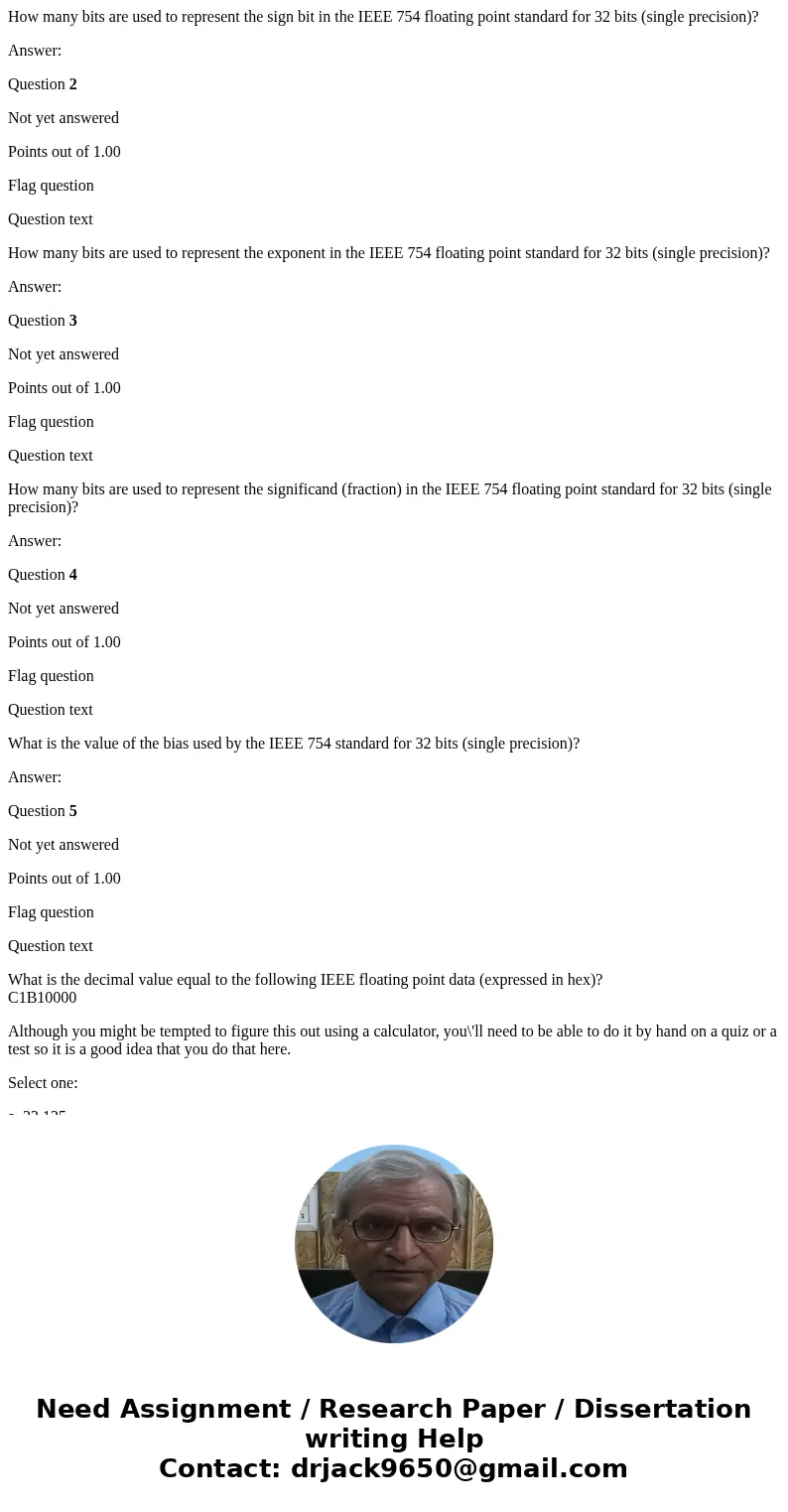
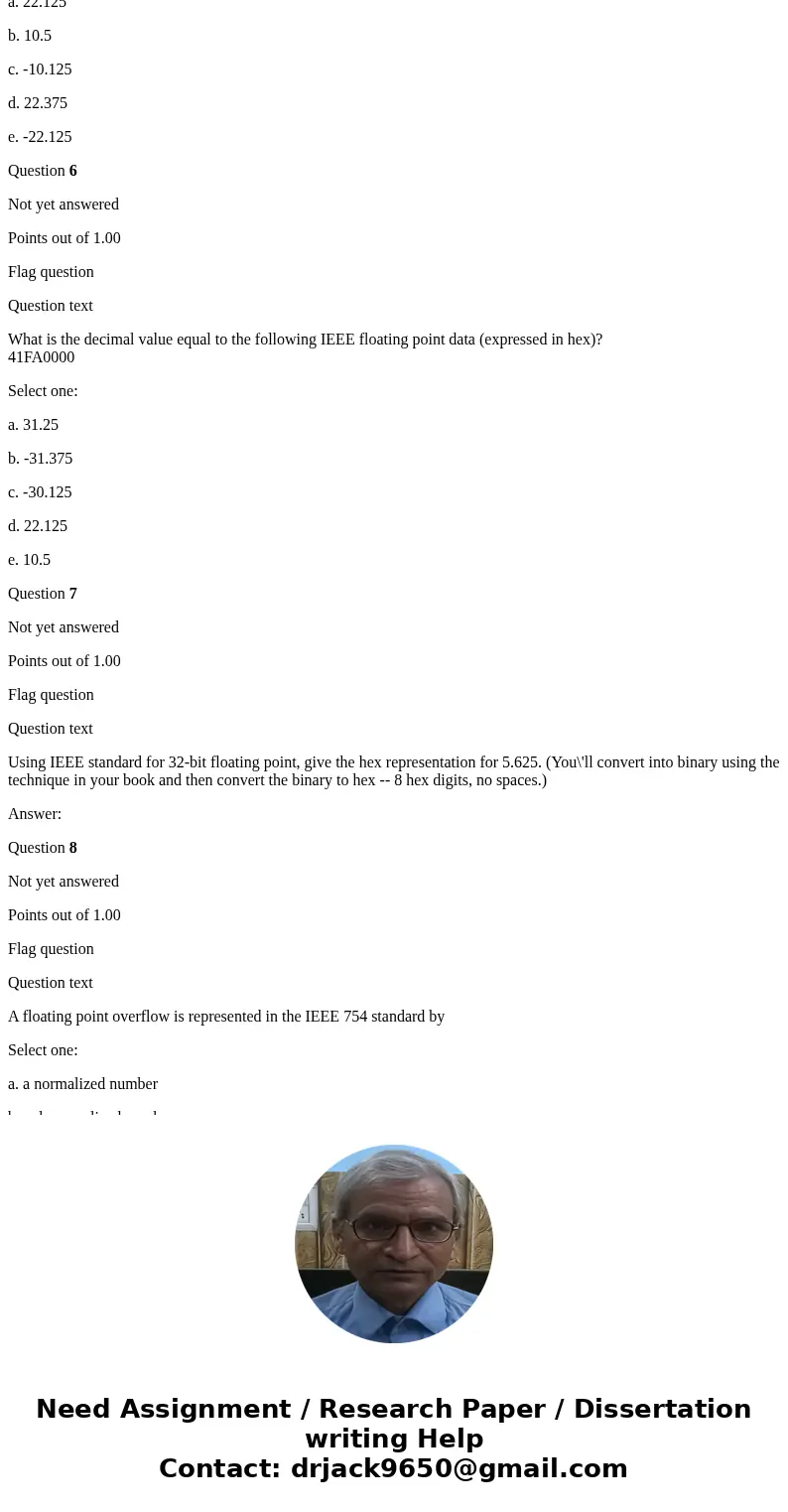
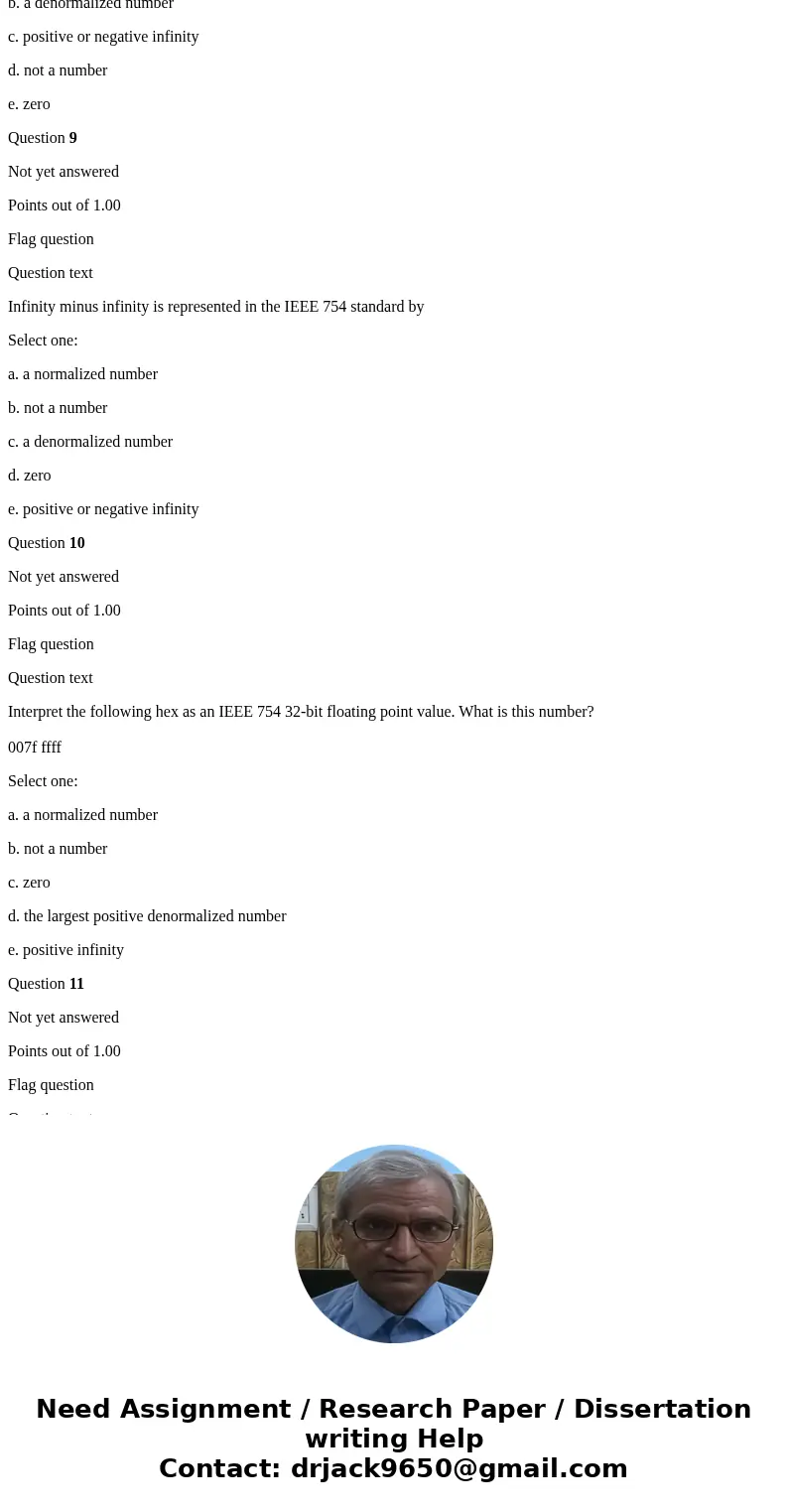
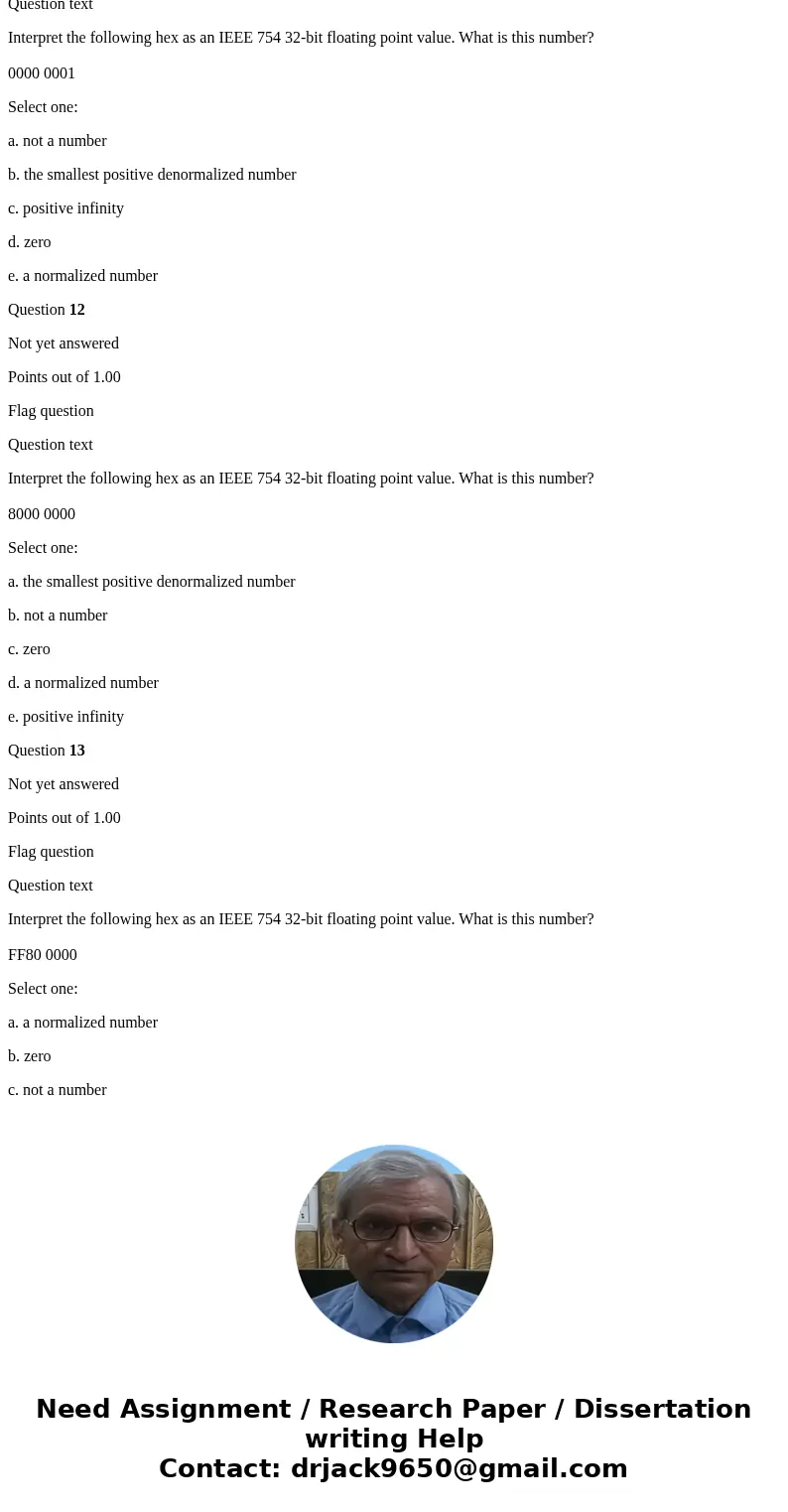
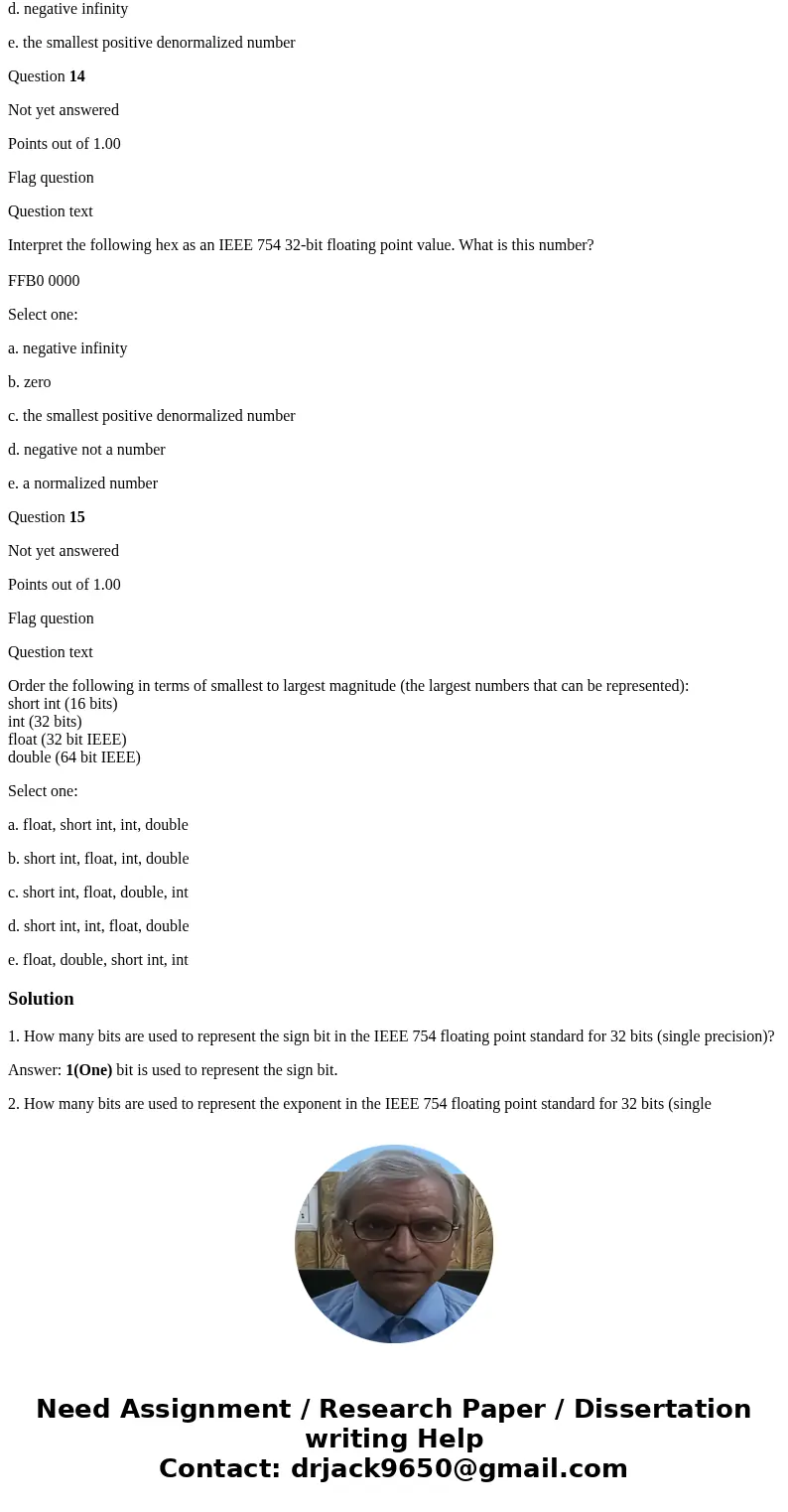
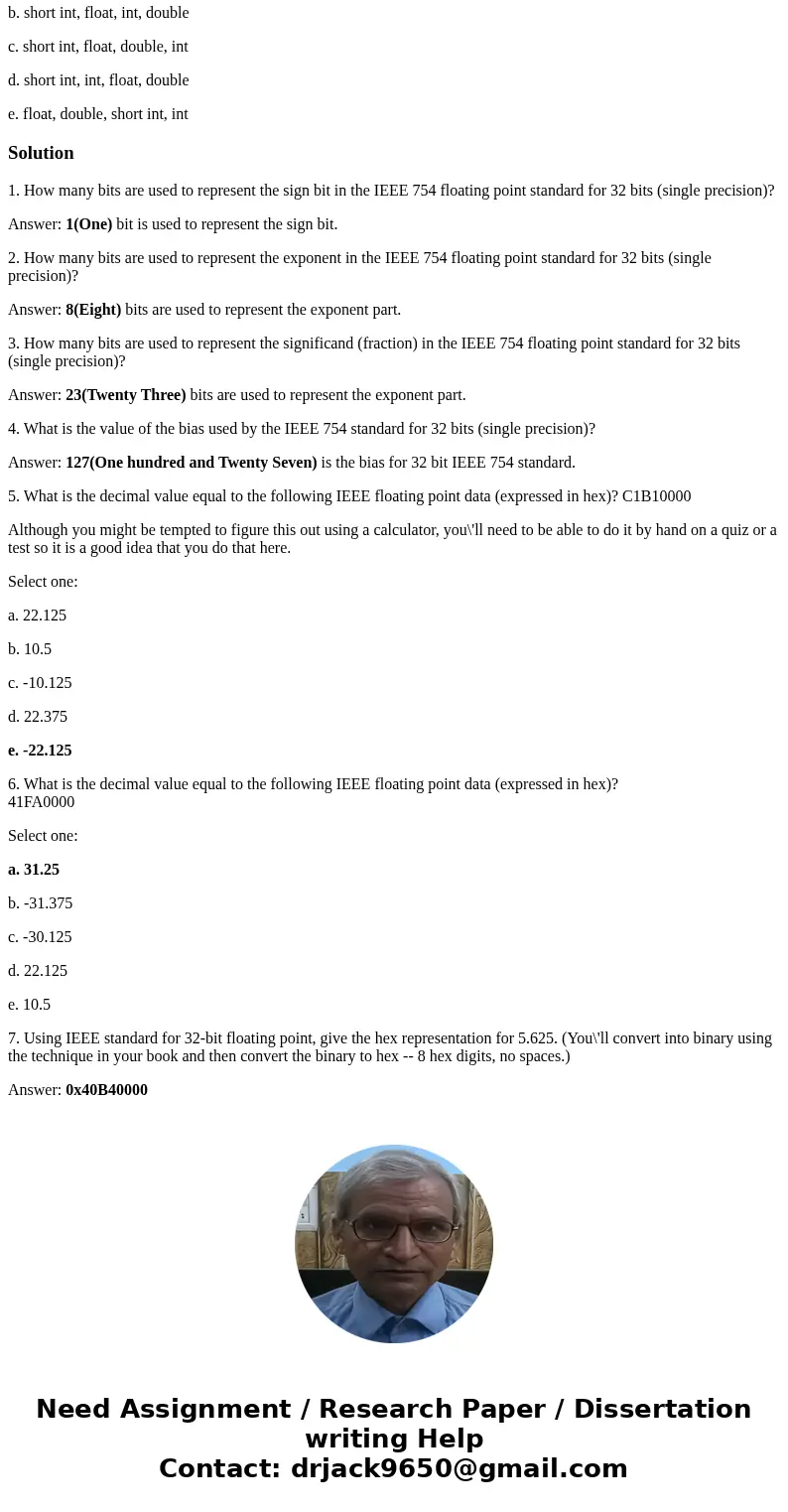
 Homework Sourse
Homework Sourse